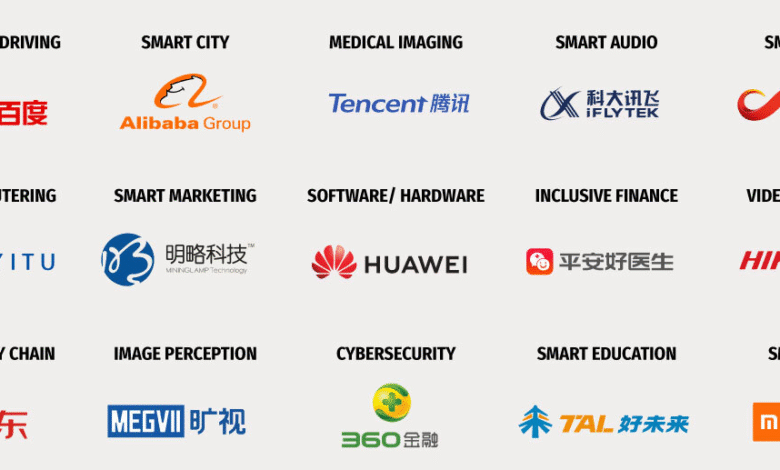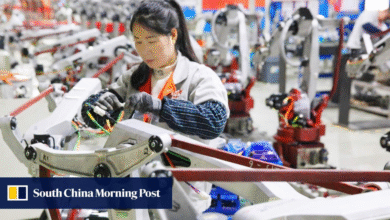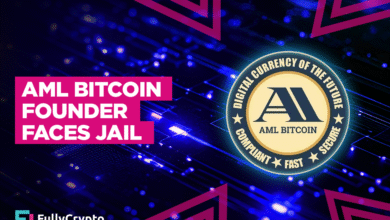Chinese AI Companies Drive Growth Despite Economic Challenges

Chinese AI companies are at the forefront of the nation’s technological revolution, driving remarkable growth even amidst economic challenges. In the first quarter, notable players like Alibaba and Baidu reported impressive increases in their cloud revenue, showcasing an 18% and 42% growth year-on-year respectively. This surge highlights the potential for artificial intelligence to reshape the Chinese tech market, pushing these companies towards a new era of profitability. Furthermore, Tencent’s strategic investments in AI, coupled with Alibaba’s cloud innovations, position them well for future success, as analysts expect this sector to become a crucial driver of revenue. With the increasing adoption of AI technologies, the ripple effects are not only improving company performance but also contributing to the overall AI growth in China, marking a significant shift in the industry landscape.
In the realm of artificial intelligence development, several Chinese tech enterprises are paving the way for innovative solutions that redefine the marketplace. These burgeoning firms leverage AI technologies to enhance efficiency and effectiveness, particularly in sectors such as cloud computing and healthcare. Companies like Alibaba and Tencent are making strategic advancements through substantial investments in artificial intelligence, indicating a robust commitment to remaining competitive. Meanwhile, Baidu’s expanding AI cloud business signifies a pivot towards a future dominated by smart technologies in the Chinese economy. These developments illustrate how advancements in AI not only impact individual companies but also signify a transformation within the broader ecosystem of technology in China.
The Rising Influence of AI in Chinese Tech Companies
In recent years, the landscape of the Chinese tech market has been significantly transformed by the growth of artificial intelligence (AI). With major players like Alibaba, Tencent, and Baidu ramping up their investment in AI technologies, the spending has translated into impressive revenue gains. For instance, Alibaba reported an 18% year-on-year increase in its cloud revenue, and Baidu noted an even more remarkable 42% growth in its AI cloud business during the first quarter of 2024. This demonstrates how effectively these companies are leveraging AI to enhance their operational efficiencies and expand their market offerings.
Analysts like Brian Tycangco from Stansberry Research have pointed out that such growth rates signify that AI is not merely supplementary but foundational for these companies’ business models. The transition to robust AI-driven operations represents a critical turnaround after several years of sluggish growth for these tech giants. As these organizations embrace AI solutions, they are poised to redefine their market positions, solidifying their roles as leaders in the ever-evolving tech ecosystem in China.
Frequently Asked Questions
What role does AI play in the growth of Chinese tech companies like Alibaba and Baidu?
AI has been pivotal in the growth of Chinese tech companies such as Alibaba and Baidu. In their recent reports, both companies showcased significant growth in their AI cloud business, with Alibaba’s cloud revenue rising by 18% and Baidu’s AI cloud business growing by 42%. This trend indicates that AI is a major driver for these companies, promoting increased market efficiency and customer targeting.
How are Tencent’s investments in AI contributing to its business growth?
Tencent’s investments in AI have led to double-digit growth in its marketing revenue. By employing advanced AI tools, Tencent has enhanced its ability to target consumers effectively, resulting in improved financial performance. As AI technology evolves, it’s expected that Tencent’s focus on AI will further solidify its position in the Chinese tech market.
What impact has AI had on Alibaba’s cloud business revenue?
Alibaba’s cloud business has seen a remarkable 18% year-on-year revenue growth thanks to strategic investments in AI technologies. This growth trend suggests that AI is becoming a cornerstone for Alibaba’s overall business strategy, positioning the cloud division as a leading revenue contributor moving forward.
Why are analysts optimistic about Baidu’s AI business prospects?
Analysts are optimistic about Baidu’s AI business due to its impressive growth rate of 42% in its AI cloud segment. As AI integration becomes more prevalent in enterprise solutions, Baidu is expected to leverage this opportunity, driving further market expansion and enhancing its competitive edge in the tech landscape.
How is the Chinese tech market evolving in response to AI advancements?
The Chinese tech market is evolving rapidly with the integration of AI technologies across various sectors. Reports indicate that a majority of mainland China-listed companies have mentioned AI in their 2024 annual reports, signaling a growing recognition of AI’s importance in business strategies. This shift is fostering a new generation of equity market leaders focused on technology and innovation.
What examples highlight AI investment trends among Chinese companies?
Chinese companies such as Gushengtang and Bairong exemplify the growing trend of AI investments. Gushengtang is developing an AI physician assistant, while Bairong provides cloud-based AI services for financial institutions, showcasing the diverse applications of AI across sectors including healthcare and finance.
How does AI influence marketing strategies for companies like JD.com and Meituan?
AI has transformed marketing strategies for companies like JD.com and Meituan, facilitating double-digit revenue growth. By utilizing AI tools, these companies can target consumers more effectively, resulting in optimized marketing campaigns and enhanced customer engagement.
What is the significance of AI for investors looking at Chinese tech stocks?
AI presents significant opportunities for investors in Chinese tech stocks, as the technology is driving major growth in revenue and market share. Analysts from Morgan Stanley have identified numerous AI-related stocks with substantial growth potential, making the Chinese AI sector an attractive option for investment.
What support is the Chinese government providing for AI development?
The Chinese government is actively supporting AI development through policies that encourage innovation and adoption. This government backing is crucial for facilitating tech advancements, enabling companies within the Chinese AI landscape to compete on a global scale and attract foreign investments.
How do Chinese companies compare to international competitors in AI technology?
Chinese companies have become competitive players in the AI sector, as evidenced by developments like DeepSeek, which rivals OpenAI’s ChatGPT at lower costs. With a robust pool of engineers, vast data resources, and a supportive environment, Chinese companies are positioned to accelerate their AI technological advancements in the global market.
| Company | Growth Rate | Revenue Segment | Key Notes |
|---|---|---|---|
| Alibaba | 18% | Cloud Business | Growth indicates potential as second largest segment. |
Summary
Chinese AI companies are positioned for significant growth as artificial intelligence continues to drive their market dominance. The first quarter has shown that major players like Alibaba and Baidu are enhancing their revenues through AI-focused cloud services, which are expected to become major income streams. As the demand for AI technology escalates, these companies are not only innovating but also attracting investor confidence, hinting at a promising future for Chinese AI companies in the global market.




